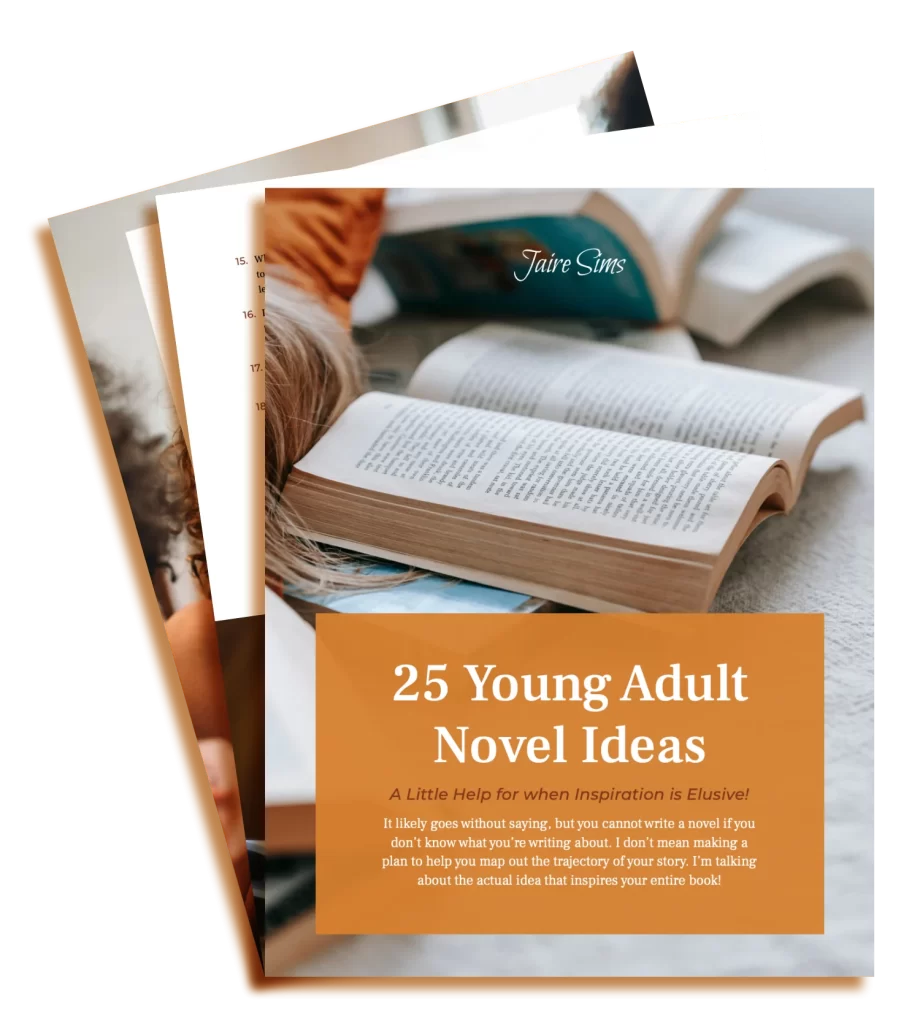YA Fiction 101: An Introduction to the Genre and Its Key Elements
Did you know that the Young Adult (YA) fiction genre is not only popular among teens? Many adults read YA literature, too, which I mentioned in my previous post about the popularity of novels within the category. But what is YA fiction, and what makes it stand out from other literature?
What is YA Fiction?

YA fiction is a category intended to be the next level of reading between children’s books and adult literature. It’s a category because stories in the young adult fiction genre can include a variety of genres, from fantasy to historical fiction to mystery and everything in between. The term “young adult” describes the target demographic of readers between the ages of 12 to 18.
YA typically focuses on teenage characters navigating through their experience of adolescence. As a result, many themes can be illustrated in these types of stories, such as romantic and sexual interests, friendships, self-identity, and coming-of-age, to name a few.
These novels have a protagonist with a voice clear enough that a reader can instantly get to know the character in a story, mostly told in the first person, to allow readers to see the hero’s world through their eyes and know their private thoughts and emotions.
However, some YA stories are told in the third person, often when the focus is on multiple characters rather than a single protagonist, allowing a broader interpretation of the world and events.
Finally, the target age of the writing considers the topics and themes illustrated in a story. It’s okay for YA stories to tackle mature content when teenagers are involved. Nothing is off-limits. However, the language and imagery in YA stories are often less graphic and censored to maintain a certain level of sensitivity for the readers.
Need a Spark of Inspiration?
Let Your Creativity Soar!

The Appeal of YA Fiction

One of the key reasons these books appeal to so many readers is that they evoke powerful, real emotions. A lot of YA stories tackle issues that teenagers experience in real life, enabling teen readers to empathize and connect with the characters and story.
For adults, most of these issues are familiar to them, with many having gone through similar experiences themselves when they were teens. Because YA fiction addresses real-life problems, it makes it easy for readers of all ages to relate to the story.
YA fiction is often told through the lens of people who may look or think differently than the reader. As a result, that exposes young adult readers to perspectives, cultures, and identities that differ from their own. It can help readers to develop critical thinking skills and a deeper understanding of the world.
YA literature is also a tool for escapism for many readers. Those who desire to temporarily escape from the real world will read a good book as their choice of entertainment. Novels with a page-turning story can hook readers from beginning to end with compelling characters, relatable themes, high tension and stakes, and exciting plots. Regardless of the target demographic, a good read is fun to dive into.
Vital Elements of YA Fiction

A Hero
A stalwart, compelling protagonist is critical to YA fiction. Someone that is likable, relatable, and makes readers root for them. It’s also essential for the character to transform or grow by the book’s end.
You’ll also need supporting characters that contribute to the protagonist’s journey in the book. A strong YA story has characters that each serve a particular purpose in the story; otherwise, they are seen as useless or irrelevant to readers.
A Revelation
YA fiction tackles various themes, including but not exclusive to identity and self-discovery. With YA fiction, it’s common to see the protagonist trying to find their place in the world as they deal with issues of identity.
Typically, they feel they don’t quite fit in with their peers or society but often emerge with a clear realization of who they are by the book’s end after going through key events that shape their life. From this point forward, the protagonist navigates the world with their new sense of identity.
A Relationship (or Two)
Relationships are also a common theme in YA fiction, whether they be friendships like the protagonist losing friends or making new ones. Also, it’s not uncommon for a friendship to turn romantic (but this theme isn’t exclusive to friends!)
Beyond romance, families can play just as important a role in YA stories, particularly between the relationship of the protagonist and their immediate or extended family.
A Way to Speak
The plot and pacing are critical to an engaging storyline, and many stories in the young adult fiction genre are often written with a faster pace in mind since teenagers often live busier lives than children. Typically, the inciting incident occurs soon after the beginning of the story, with conflict, tension, and suspense building up soon after until the story’s climax.
A fast-paced book also ensures readers will read stories quickly and not want to put the book down. Furthermore, when writing the narrative and scenes, it’s as if it comes from the voice of a teenager.
That creates an authentic experience regarding young adult communication, and the dialogue feels realistic and casual, flowing naturally rather than stiff and proper, allowing the author to connect authentically with the target readership.
Notable YA Fiction Examples

There are some YA stories I want to highlight that showcase the key elements discussed. One of my favorites is Speak (Laurie Halse Anderson), which focuses on a teenage girl, Melinda, dealing with the trauma of a recent sexual assault as she begins her first year of high school. Relationships are a key aspect of the story, as the protagonist deals with losing former friends, making new ones, and family dynamics as she struggles to talk due to her trauma.
The story The Outsiders (S.E. Hinton) tackles identity, as the main character, Ponyboy, tries to figure out who he is, believing he is more than just a gang member.
My own story, Getting By, is a coming-of-age story focusing mainly on the theme of self-discovery, as my main character, Carter, copes with understanding his sexuality as he devolves into a romantic relationship with a close friend.
One of the best ways to write great YA fiction stories is to read other YA novels. If you’re an avid reader of YA literature or an aspiring YA author, go read other YA novels that may interest you to get a sense of how stories in this category are written!
If you want even more help, I provide more resources on my website to support you in writing a compelling novel in the young adult fiction genre, like my freebie, Elements Every Great YA Novel Needs, which you can download now. If you have any other thoughts or questions, feel free to reach out to me at jsims@jairesims.com.







